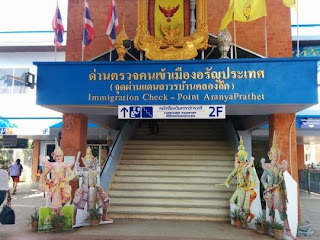Being in a new country comes some challenges. One of them is
not having skills in the local language.
But you still have to buy goods and services. Such was my day today,
waking up in Myanmar with a need to buy tomatoes, onions and a haircut. As I
say to my students, trade is a great motivator.
I can source the food part of my requirement from the local
supermarket. It being a safe environment with all the prices clearly marked and
screen displaying how much you owe in English. But with them asking 8000 Kyat
(about $8) a kilo for tomatoes, it was time for me to venture out to the local
market and see how I fair. The three phrases I was armed with were:
Dar bey laut ley? Dar=this, bey laut (said with a half a “t”
at the end, definitely not a hard sound)=how much, and finally ley=the Myanmar
word to indicate you are asking a question.
Zay kyee dey. Zay=price and kyee dey=too big .
Shaw bar own. Shaw is lower and bar own being like please in
English. I guess you can say “Zay shaw bar own” but what you want to lower is
implied in the conversation.
First up was the hair cut. I had seen a barber close to my
apartment and set off on foot to find them. However, where I thought they were
is not where they actually are. Looking confused I saw a young lady getting ready
to go for a ride on her bicycle.
Mingalabar, a formal greeting came out of my mouth. She
smiled and said the same. I mimed a haircut and asked Bey hmar ley? Loosely
translated, where is it at? You usually say the thing at the start of the sentence,
but hey, I thought my mime would work pretty well. She laugh and pointed about
100 meters up the street on the other side of the road. Boy, I can’t see for
looking I thought, laughed and thanked her and headed off to get a haircut.
The store, now being easy to find, had all their prices in
Myanmar. Again, miming and basic phrases carried the day and my hair was cut
for the princely sum of 1000 Kyat ($1). The man cutting my hair and I tried to
carry on a conversation, but with my Myanmar being so weak and his English being
very poor, it was difficult. We did share a few laughs about things though. I
am guessing that a haircut is a social experience and I need to improve my
language skills.
Having gained a little bit of confidence from the barber the
next stop was a quick walk to the market. Surely even with my poor language
skills I could get a better price than 8000 Kyat for a kilo of tomatoes. The
market is about another 100 meters or so walk, but it is hot at the moment all
over South East Asia. What I found was a typical wet market setup. Easy I
thought, I have done this before.
Wandering around the stalls for one that looked appealing, I
soon stumbled across a nice looking fruit and vegetable stand. I observed what
was happening, people asking for the price of things, haggling, agreeing and it
all being in good fun. It is one of the things I like about SE Asia, the market
can be a fun place to go. But you have to go in with the right attitude. My beginner
phrases seemed to match up with what was being said, and I adjusted my pronunciation
to match theirs. I would have been only slightly off, but Myanmar is tonal, so
sometimes a miss is as good as a mile!

I found my tomatoes, pointed and asked “Dar bey laut ley?” A question came shooting back quickly; I didn’t
understand the words but thought if I was her, what would I be asking? Quickly
it dawn on me, I didn’t specify how much I wanted! “Ti (one) kilo dey” came my
reply. “900 Kyat” she said. I knew I was on a win, down from 8000 Kyat at the
supermarket. You have to remember anywhere in SE Asia that the first quoted
price is to leave you and seller negotiation room. You are expected to haggle. But
always remember they want to sell, you want to buy, you are just arguing over
price. And the end result is meant to be a win for both parties. I pulled a
face and said “Oiy! Zay Kyee dey!”. Haggling is as much about theatre as it is
about your skill to get the best price. She laughed and reduced the price down
to 700 Kyat. “Yu mey” I said. I’ll take them being the loose translation.
I quickly ran through a few other items I needed like onions
and lettuce, smiling and joking a little bit through mime. Haggling was now not
important, because we had broken the ice with the tomato negotiations. This had
set the markup she and I were happy with. I paid a really reasonable price for
my stuff and went to head off. Ah, damn, forgot one more thing. Chilies! I
point to the bowl of chilies and she scooped up a handful, put them in a bag
and said in English “Present”. “Kyay zu tin bar dey” came my reply, or thank
you. Always pays to be polite, always smile and treat it as a social experience.
The point of the exercise was, trade is a powerful
motivator. In a market both the buyer and seller want to come to an agreement,
so you can excuse slight imperfection in language skills. Always have a point
of reference for the price of something and remember the first price is the
starting point.







